Zimbabwe’s flag embodies the essence of the nation, symbolizing its rich history and future ambitions. It’s more than just a national emblem; it’s a narrative of Zimbabwe’s varied landscapes, cultural richness, and historical depth.
Flag of Zimbabwe
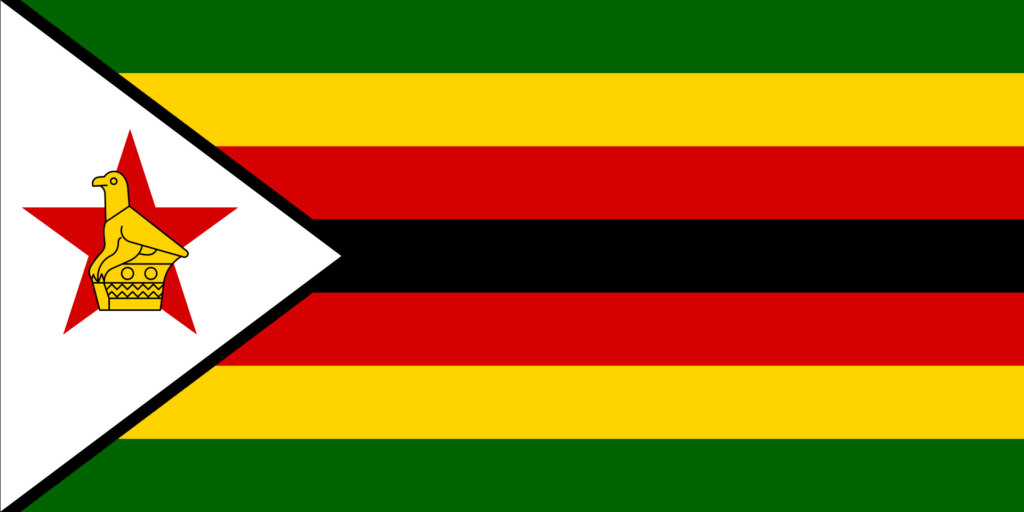
The flag of Zimbabwe is distinguished by its striking design, featuring seven horizontal stripes and a white triangle at the hoist side. At the heart of the triangle lies a red five-pointed star, a beacon of hope and aspiration, surmounted by the iconic Zimbabwe Bird.
This emblem, deeply rooted in the nation’s heritage, reflects Zimbabwe’s spirit and rich cultural history, while the flag’s overall structure symbolizes the country’s journey and its vision for the future.
Flag of Zimbabwe: Color Palette
Zimbabwe’s flag is imbued with colors reflecting its African environment and cultural heritage, with each shade narrating the unique aspect of the nation’s identity and legacy.
This rich palette invites a closer look, promising insights into weaving Zimbabwe’s physical beauty with its cultural and historical narratives.
Beyond mere aesthetics, these colors serve as silent storytellers, offering a glimpse into the country’s resilient spirit and its journey through time.
Zimbabwe Flag Map
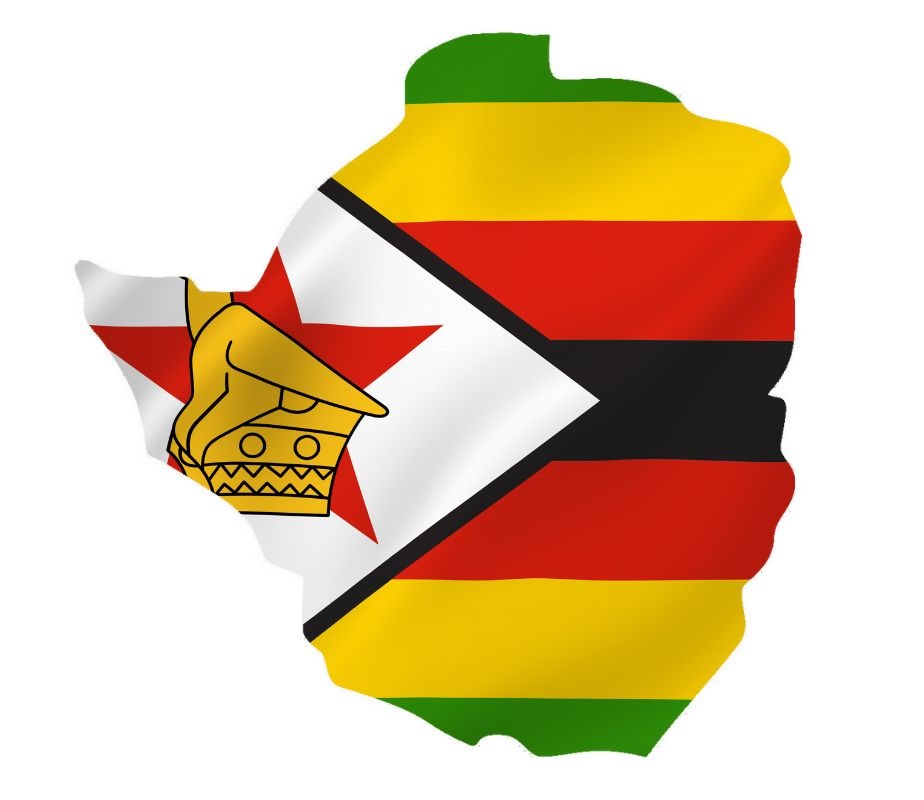
Zimbabwe Flag Emoji: 🇿🇼
Meaning of Each Color
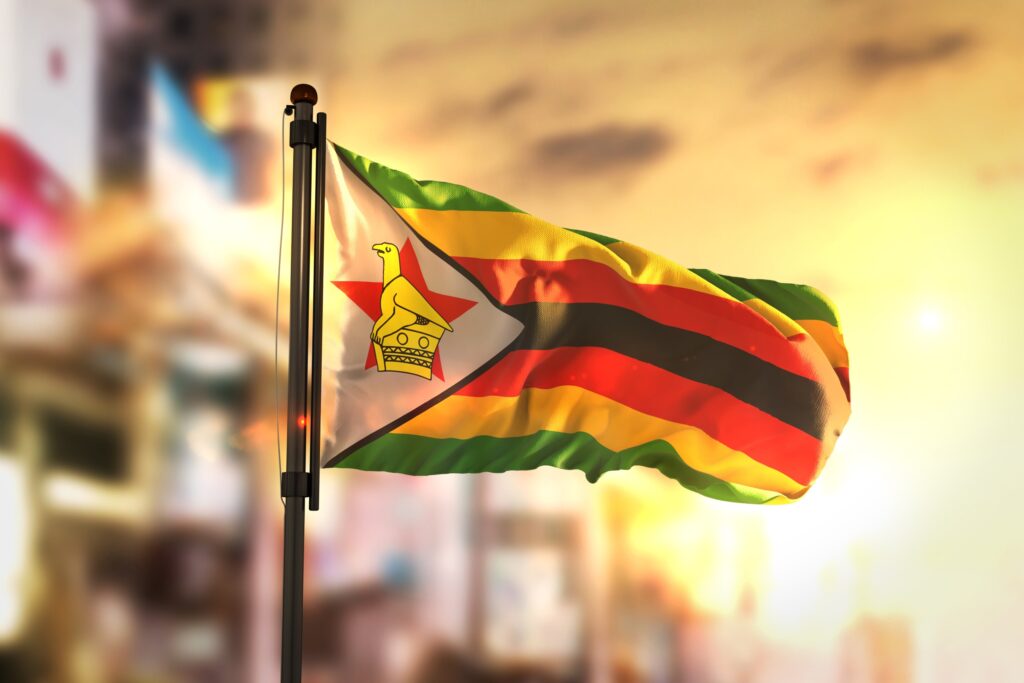
Green
This color symbolizes Zimbabwe’s agriculture, a foundational pillar of its economy and way of life. The green reflects the fertile lands that sustain agricultural practices, which have been central to Zimbabwean culture and survival through the ages.
This connection to the land highlights the country’s reliance on and respect for its natural resources, a testament to the enduring bond between the people and their environment.
Gold (Yellow)
Gold represents Zimbabwe’s vast mineral wealth, particularly emphasizing the country’s gold reserves. This color underscores the economic significance of mining in Zimbabwe, shaping its historical and contemporary narratives.
The gold color is a reminder of the wealth beneath the earth’s surface that has attracted various peoples and cultures to Zimbabwe over centuries, contributing to its complex history.
Red
The red stripes are a poignant reminder of the bloodshed during the liberation struggle, representing the sacrifice and bravery of those who fought for Zimbabwe’s independence.
This color embodies the spirit of freedom and the price paid to achieve it, honoring the memory of the nation’s heroes and their commitment to self-determination.
Black
Black stands for the black majority of Zimbabwe, emphasizing the nation’s identity and the rich heritage of its people. It’s a celebration of African identity, resilience, and the enduring strength of the community that has overcome numerous challenges throughout history.
White
The white triangle symbolizes peace, reflecting Zimbabwe’s aspirations for harmony among its people and with the world. It’s a beacon of hope for unity and tranquility in the nation’s journey forward, standing against the backdrop of its complex history.
Zimbabwe’s Coat of Arms
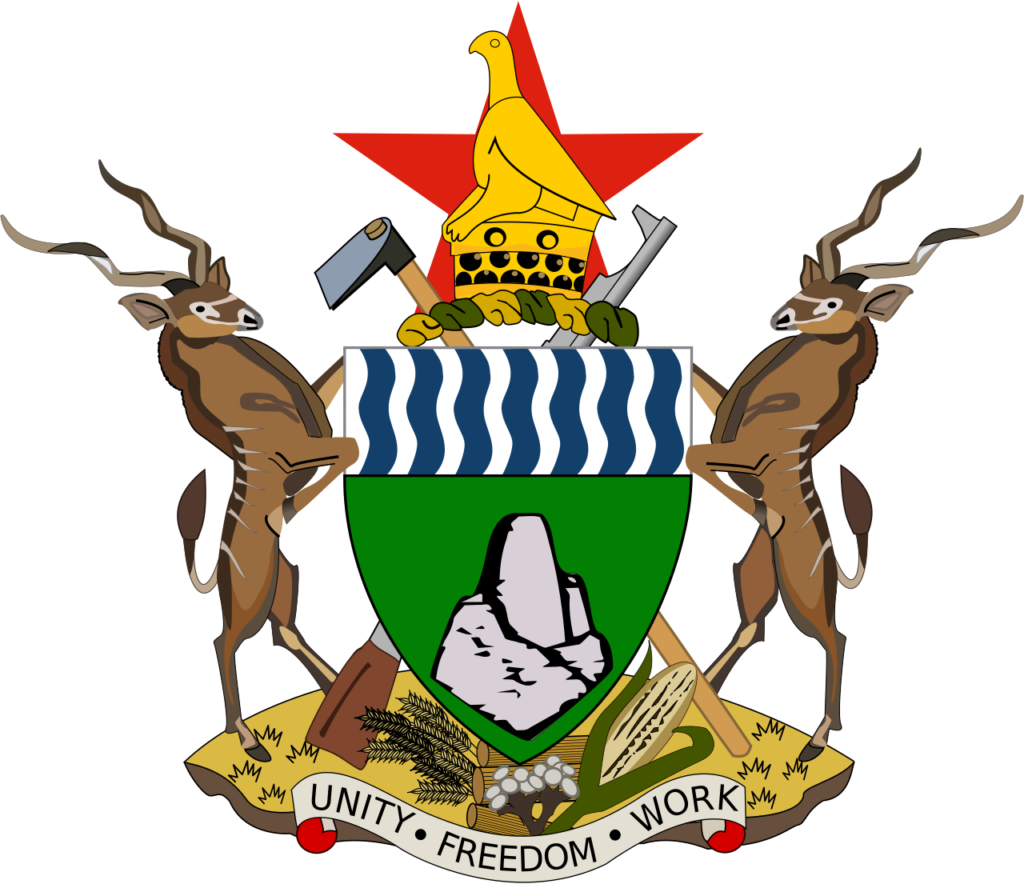
Zimbabwe’s Coat of Arms, distinct from the flag, incorporates various elements that symbolize the nation’s values, history, and aspirations:
- Green Shield: Represents the fertility of Zimbabwe’s land, echoing the green on the flag that stands for agriculture. This element underscores the importance of the land’s productivity to the nation’s well-being and prosperity.
- Wavy Blue and White Lines: Symbolize water, which is essential for life and prosperity. These elements highlight the importance of natural resources in sustaining the country’s agriculture and, by extension, its people.
- Rifle and Hoe: Reflect the transition from war to peace, indicating the nation’s path from a struggle for independence to peaceful nation-building. This imagery emphasizes the importance of both defense and agriculture in the nation’s past and future.
- Gold and Green Wreath: Symbolizes the mining and agricultural industries, key pillars of Zimbabwe’s economy. This element ties back to the gold and green colors on the flag, representing mineral wealth and agricultural fertility, respectively.
- Red Star: Echoes the one on the flag, representing the nation’s bloodshed throughout history. It signifies hope for the future while acknowledging the sacrifices made in the past.
- Kudus: The harmonious colors of these animals represent the diversity of Zimbabwe’s people. This imagery promotes unity among the different ethnic and cultural groups within the nation.
- Earthen Mound with Cotton, Maize, and Wheat Signifies the nation’s commitment to providing for its people, emphasizing the importance of agriculture in sustaining the population.
- Motto “Unity, Freedom, Work“: Encapsulates the nation’s values, emphasizing the importance of collective effort and unity in preserving and building upon hard-won freedom.
Each component of the Coat of Arms tells a part of Zimbabwe’s story, from its rich natural resources and cultural diversity to its history of struggle and hope for the future.
Historical Evolution and the Meaning Behind Changes
The flag of Zimbabwe has seen significant changes, each marking a key phase in the nation’s history from the era of colonial rule to its present independence.
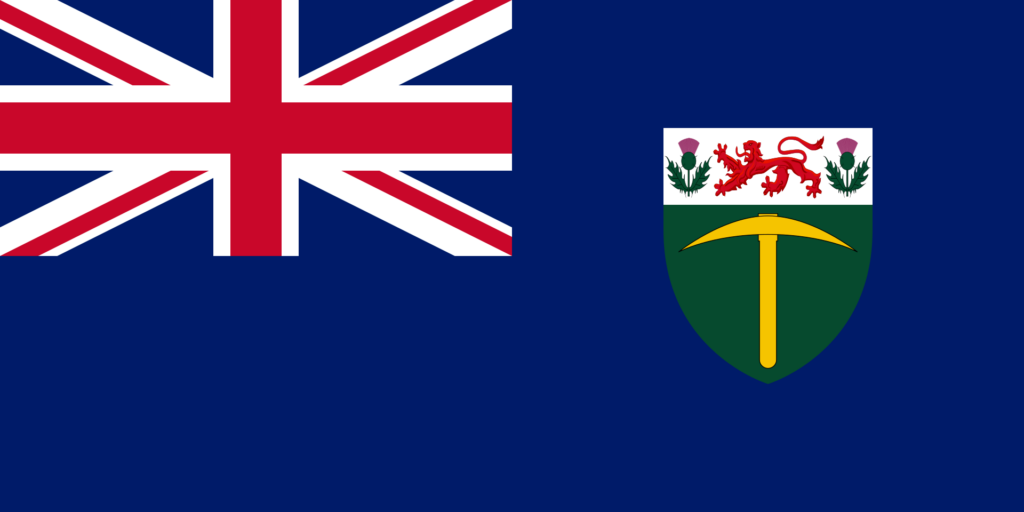
Initially, as Southern Rhodesia, the region’s flags bore colonial symbols, notably the Union Jack, reflecting its status as a British colony without representing the indigenous populace.
A notable shift occurred with Rhodesia’s unilateral declaration of independence in 1965, introducing a new flag that, while moving away from colonial emblems, still fell short of embodying the majority’s struggle for self-rule.
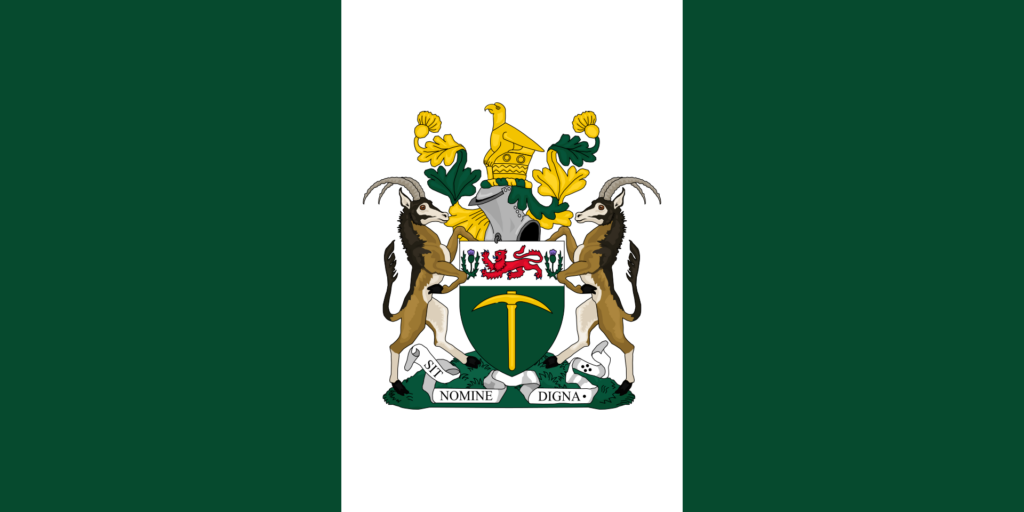
A more profound change came in 1979 with the Zimbabwe Rhodesia flag, which, for the first time, incorporated elements associated with African nationalism and the pan-African movement.
Yet, this flag was also temporary, replaced by the current flag upon Zimbabwe’s recognized independence in 1980. This new flag symbolized a fresh chapter designed to inclusively reflect the nation’s identity and hopes.
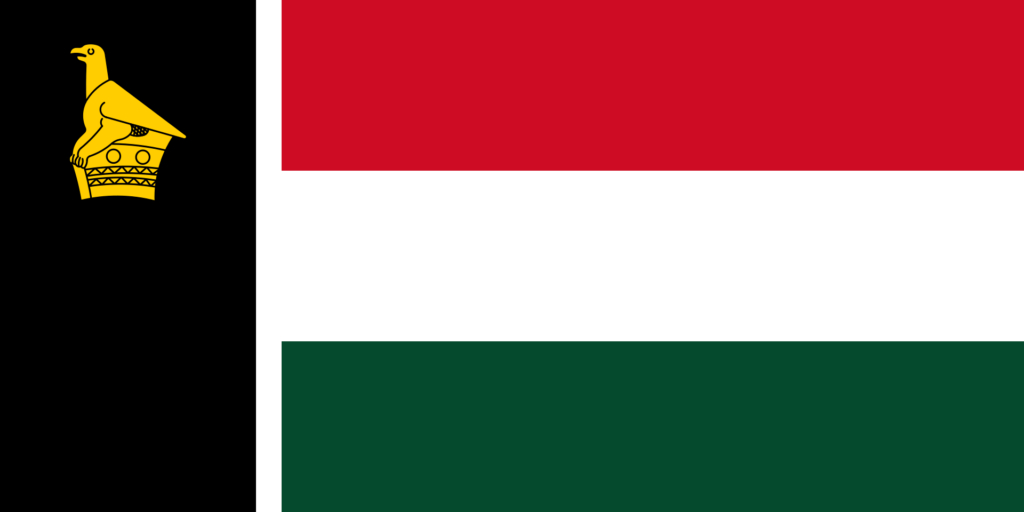
Key elements like the Zimbabwe Bird and the red star were added, linking the flag to Zimbabwe’s rich pre-colonial heritage and its post-independence goals.
This evolution of Zimbabwe’s flag, from colonial insignias to symbols of independence and unity, encapsulates its path to forging its distinct identity and vision, steering clear from colonial dominance to celebrate its autonomy, heritage, and future.
Overall Symbolic Meaning of the Flag
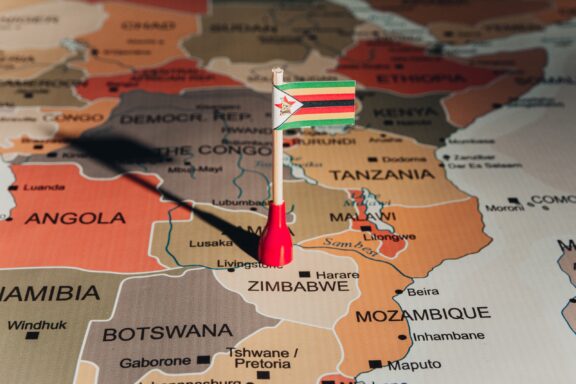
The flag of Zimbabwe embodies the nation’s journey, blending elements that capture its historical struggles, cultural richness, and aspirations for harmony and prosperity.
It serves as a symbol of sovereignty, reflecting a narrative that moves from a past marked by challenges toward a hopeful future, encapsulating the essence of Zimbabwe’s identity and its people’s enduring spirit.
Similar Flags to the Flag Zimbabwe
The flags of Mozambique, Uganda, and Kenya share similarities with Zimbabwe’s flag, primarily due to the shared historical contexts and symbolic themes common among many African nations.
Mozambique
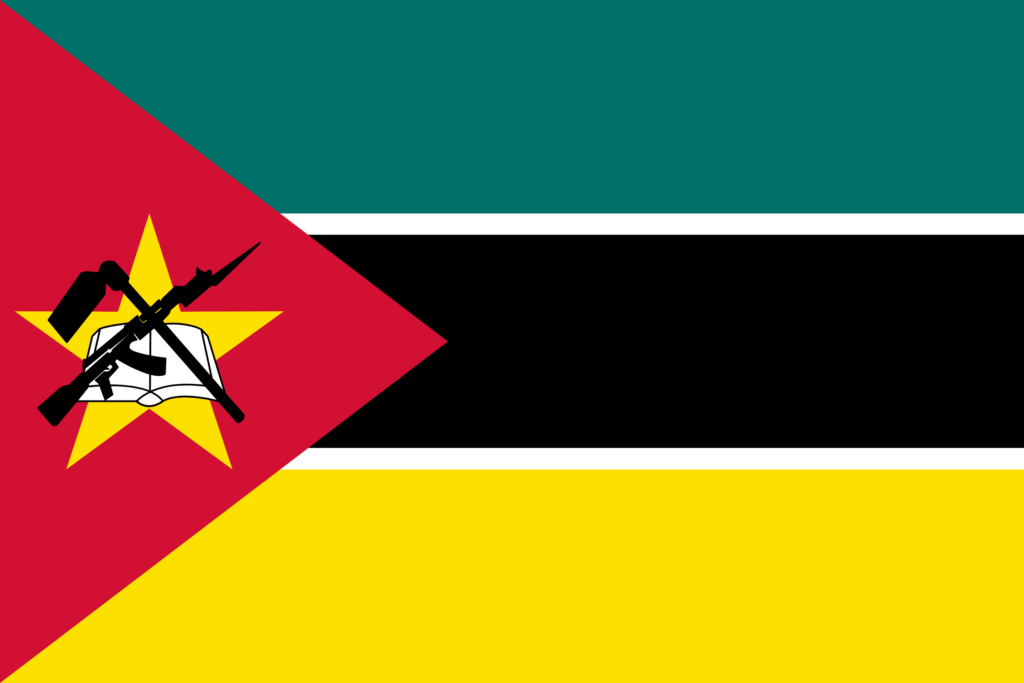
The similarity with Zimbabwe’s flag stems from the shared history of struggle against colonialism and the pursuit of independence. Both countries experienced intense liberation movements that deeply influenced their national identities and symbols.
The adoption of Pan-African colors in their flags reflects a common commitment to African unity and solidarity in the post-colonial era.
Uganda
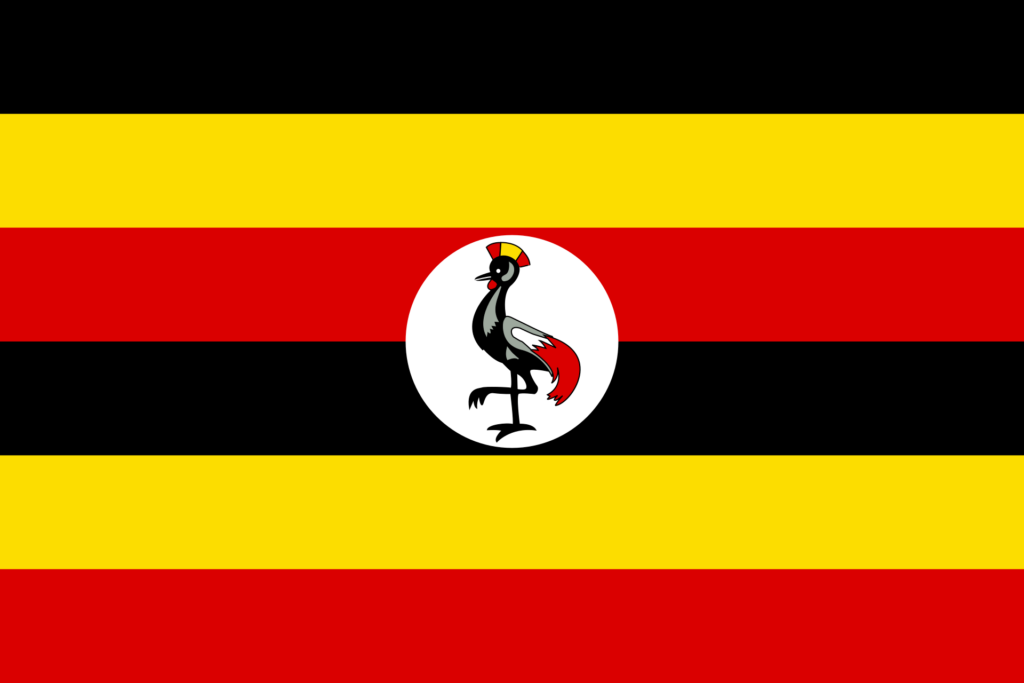
Flag of Uganda resembles the shared Pan-African spirit with Zimbabwe, symbolizing unity, freedom, and the rich cultural heritage that defines the continent.
Both nations use their flags to convey messages of hope, resilience, and a bright future, rooted in their struggles for independence and their journey toward nation-building in the aftermath of colonial rule.
Kenya
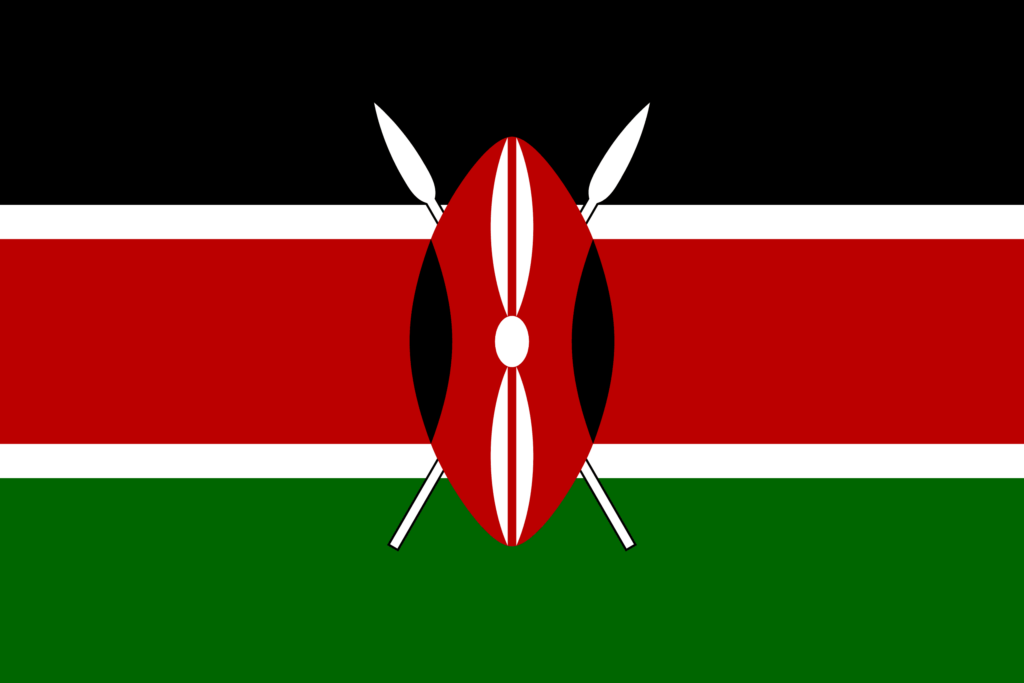
Similarities between Kenya’s and Zimbabwe’s flags can be attributed to common themes of independence, cultural heritage, and people’s aspirations.
Both countries’ flags embody the resilience and spirit of their citizens, reflecting the collective memories of their fights for freedom and the ongoing journey toward progress and unity.
Final Thoughts
With its intricate symbolism, the flag of Zimbabwe stands as a testament to the nation’s resilience and unity, echoing a shared narrative with flags worldwide. Its significance to Zimbabweans lies in its embodiment of national pride and the collective journey of a people towards sovereignty and progress.
Image Sources and Copyright Information
- Zimbabwe Flag Waving: © Natanael Ginting/Shutterstock
- Map of Southern Africa Highlighting Zimbabwe with Flag Pin: © GR.Stocks/Shutterstock